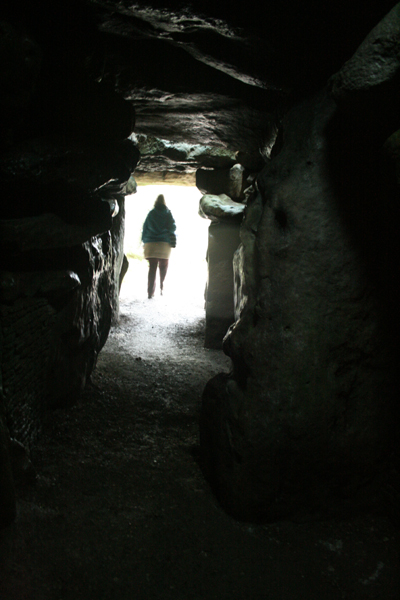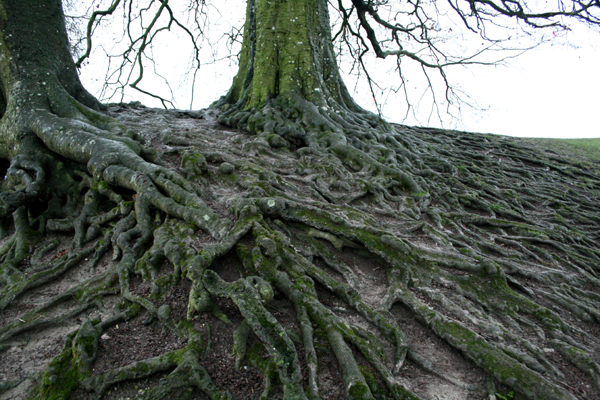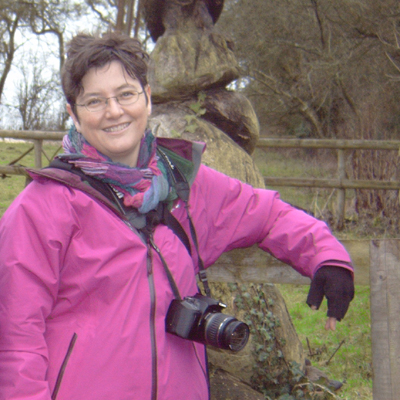After a suitably festive Yuletide (spent largely with family and friends) which featured a lot of winter feasting, what better way to welcome in the new year than with a long walk across the countryside… So on a rather grey and rainy January 1st, two friends and I set out on a yomp around the vicinity of West Kennet and Avebury.
 2011’s warm early spring weather resulted in phenomenal crops of wild fruits of all sorts. Whilst red (and hence most attractive to birds) fruits such as holly berries and rose hips are now scarce, crab apples still decorate hedgerows, whilst sloes and ivy berries cover twigs so thickly that branches were drooping downwards under the weight. We kept ears and eyes alert for winter thrushes such as fieldfare
2011’s warm early spring weather resulted in phenomenal crops of wild fruits of all sorts. Whilst red (and hence most attractive to birds) fruits such as holly berries and rose hips are now scarce, crab apples still decorate hedgerows, whilst sloes and ivy berries cover twigs so thickly that branches were drooping downwards under the weight. We kept ears and eyes alert for winter thrushes such as fieldfare 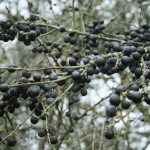 and redwing, but to no avail. Plenty of blackbirds, robins, finches and other smaller birds, though. And the scent of foxes and badgers was heavy along the hedgebanks as we walked along. We half expected to see rabbits foraging but maybe the rainy weather was keeping them below ground. Such a contrast with the heavy snows and prolonged freezes of the preceding two years.
and redwing, but to no avail. Plenty of blackbirds, robins, finches and other smaller birds, though. And the scent of foxes and badgers was heavy along the hedgebanks as we walked along. We half expected to see rabbits foraging but maybe the rainy weather was keeping them below ground. Such a contrast with the heavy snows and prolonged freezes of the preceding two years.
I’m wondering if we’ll get severe winter weather in January or February? Some of my friends further north have had snow on the hills, but apart from a few hard frosts it’s stayed mild in southern England. We noticed on our walk that fungi is still much in evidence, including the Jelly Ear Fungus Auricalaria auricula-judae, whose scientific name reveals an older common name supposedly derived from the belief that Judas Iscariot hanged himself from an Elder tree, on which this fungus commonly grows. While some reckon it to be a wild food worth trying (both Richard Mabey’s Food For Free and Roger Phillips’ Wild Food give recipes), its texture isn’t hugely appealing and it needs long or imaginative cooking to render it palatable. As you often find the Chinese equivalent (aka ‘Wood Ears’) in spring rolls and stir fries, maybe do as they do: slice very thinly and cook well until tender. And try not to keep in mind that you are eating something that essentially resembles a severed human ear. Yum.
auricula-judae, whose scientific name reveals an older common name supposedly derived from the belief that Judas Iscariot hanged himself from an Elder tree, on which this fungus commonly grows. While some reckon it to be a wild food worth trying (both Richard Mabey’s Food For Free and Roger Phillips’ Wild Food give recipes), its texture isn’t hugely appealing and it needs long or imaginative cooking to render it palatable. As you often find the Chinese equivalent (aka ‘Wood Ears’) in spring rolls and stir fries, maybe do as they do: slice very thinly and cook well until tender. And try not to keep in mind that you are eating something that essentially resembles a severed human ear. Yum.
Halfway along our walk with the rain now taking on that familiarly British quality of 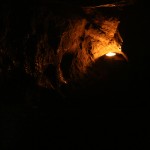 penetrative persistence, we took temporary shelter in West Kennet longbarrow. In fact when we first arrived it was standing room only inside, so we drank coffee leaning against the sarsen stones and watched the clouds scouring across the Wiltshire countryside with somewhat gloomy drama. Once the throngs had thinned somewhat we spent a few minutes in meditative silence in the damp darkness inside the chamber, atmospherically lit by a couple of candles left by previous visitors. (And also lit through the slightly less-atmospheric glass tiles cemented into the ceiling.) At around 5,600 years old this tomb predates Stonehenge by nearly half a century. Without
penetrative persistence, we took temporary shelter in West Kennet longbarrow. In fact when we first arrived it was standing room only inside, so we drank coffee leaning against the sarsen stones and watched the clouds scouring across the Wiltshire countryside with somewhat gloomy drama. Once the throngs had thinned somewhat we spent a few minutes in meditative silence in the damp darkness inside the chamber, atmospherically lit by a couple of candles left by previous visitors. (And also lit through the slightly less-atmospheric glass tiles cemented into the ceiling.) At around 5,600 years old this tomb predates Stonehenge by nearly half a century. Without 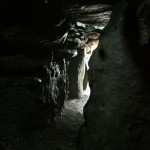 wanting to succumb to an attack of yoghurt weaving, you can feel the weight of millennia when you stand quietly in there. When Neolithic folk were building this, wheels were the latest thing and the plough had yet to be invented. Archaeological work has showed that the barrow was used for burials and ritual for 1,000 years… So hardly surprising that there is still a presence of some sort to be felt there now.
wanting to succumb to an attack of yoghurt weaving, you can feel the weight of millennia when you stand quietly in there. When Neolithic folk were building this, wheels were the latest thing and the plough had yet to be invented. Archaeological work has showed that the barrow was used for burials and ritual for 1,000 years… So hardly surprising that there is still a presence of some sort to be felt there now.
The rain and ourselves continuing, our walk took us over the A4 and past Silbury Hill, following the route of the beginnings of the River Kennet (or “the baby River Kennet” as our route guidebook would have it). Unsurprisingly after a year of scant precipitation, the “baby River Kennet” was not in evidence, consisting of a ditch with a few watercress plants and little else. With April 2011 having been the driest in the UK since reliable records began in 1910, chalk streams like the Kennet are suffering  from low flows of record proportions. In November 2011, fish started dying in their thousands as stretches of the river near Marlborough dried up, and Thames Water have launched Care For The Kennet, the UK’s first awareness campaign aimed at reducing water usage to protect water supplies and the local environment. Perhaps hard to keep drought in mind on a rainy New Year’s Day… Yet water has become another resource in high demand and suffering from subsequent supply issues.
from low flows of record proportions. In November 2011, fish started dying in their thousands as stretches of the river near Marlborough dried up, and Thames Water have launched Care For The Kennet, the UK’s first awareness campaign aimed at reducing water usage to protect water supplies and the local environment. Perhaps hard to keep drought in mind on a rainy New Year’s Day… Yet water has become another resource in high demand and suffering from subsequent supply issues.
Taking shelter at the National Trust’s barn museum in Avebury village (blessed be the young man at the museum desk who allowed us to picnic on the benches along the inside of the barn without demanding the £4.90 admission normally charged to visitors) gave us a chance to dry out our layers, resulting in a lively comparison of our assorted weather gear. I was smug in a new waterproof jacket, after months of cursing my old one which was no longer so much deflecting rain as absorbing it. The various merits of waxed cotton, wool and the wicking effects of overlong top halves settled to everyone’s satisfaction, we refuelled on Christmas cake for dessert and then set out on the last leg of our new year’s journey.
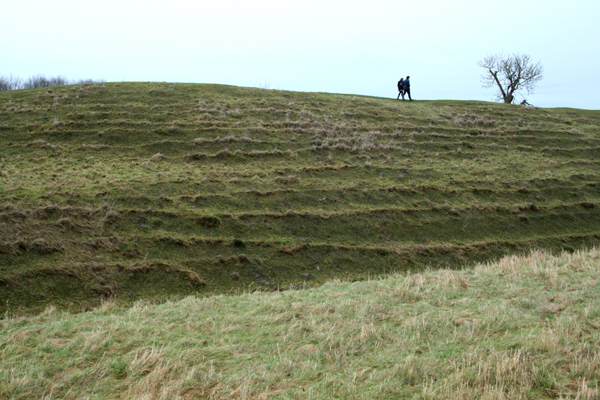 We circled an arc of the ponderous sarsen stones that ring the village, patchworked with lichens that almost seem to glow in the damp weather against the grey sandstone. Each of these massive naturally-carved blocks has a unique character.
We circled an arc of the ponderous sarsen stones that ring the village, patchworked with lichens that almost seem to glow in the damp weather against the grey sandstone. Each of these massive naturally-carved blocks has a unique character.
The last port of call before heading away from Avebury back to the Ridgeway was the serpentine roots of the beech trees that grow just east of the circle’s outer ring. A thick carpet of beech leaves had blown into rich brown drifts at the foot of the slope below the trees, but the roots themselves were exposed.
Out with the old and on with the new!

